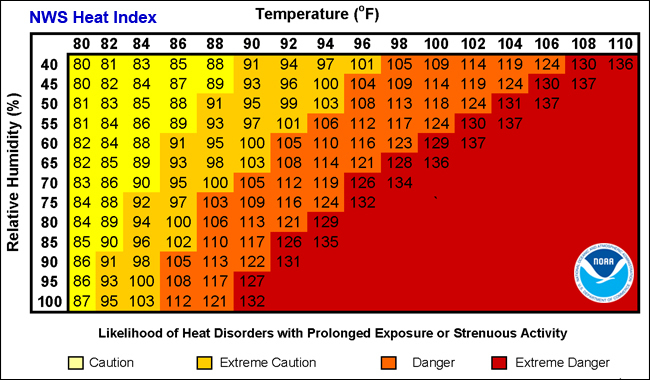OSHA Fails to Protect Workers from Extreme Heat Hazards
OSHRA Decisions Demonstrate the Need for an OSHA Heat Stress Standard
By Juley Fulcher
On June 17, 2016, the heat index in Houston, TX was 109°F. A mail carrier began to feel dizzy and nauseated as she delivered mail…She was driving a long life vehicle which is not equipped with air conditioning…. “I called the postal station. . . . There was no answer at first, so I texted my supervisor and… I let her know through the text message how I was feeling, and I didn’t receive a response from her. . . . I sat there a while. I drank water and…I tried to deliver my mail on the street that I was on. But as I delivered, I began to throw up. So I called one of my coworkers and asked if she would continue to try to call the station for me. And finally, the postal supervisor that was there that day, . . .she texted me back first and she asked me how I was feeling, and I told her. So she called me and she said, “Well, just sit there for a while and when you begin feeling a little better, continue to deliver your mail. And if I have somebody to help you, then I’ll send them.” No help arrived so she continued delivering the mail. “It took much longer but I eventually got to the end. . . . The last thing I remember was being at the Post Office.”….At the Astrodome Post Office, the supervisor asked the mail carrier if she could drive and whether she wanted him to call 911. She asked him to call her adult children who lived nearby and they would take her to the emergency room….Her children took her to an emergency room where she received a diagnosis of heat exhaustion and dehydration.
On July 15, 2020, the Occupational Safety and Health Review Commission, an independent federal agency created by Congress to decide disputes of citations or penalties that the Occupational Safety and Health Administration (OSHA) issues to employers, handed down decisions in five cases. OSHA had issued citations against the US Postal Service (USPS) for violating what is known as the “general duty clause” of the Occupational Safety and Health Act of 1970, which requires employers to create a workplace “free from recognized hazards that are causing or are likely to cause death or serious physical harm to his employees.” According to OSHA, the USPS had exposed its employees “to recognized hazards of working outside during periods of excessive heat.” In all five cases, the court vacated the citations because OSHA did not try to prove at what levels excessive heat presented a workplace hazard.
The cases all turned on the Heat Index Chart used by the National Institute for Occupational Safety and Health (NIOSH), a division of the Centers for Disease Control and Prevention (CDC). Though OSHA has no binding heat stress rule, the agency suggests employers follow NIOSH guidelines on mitigating heat stress in the workplace, including utilizing the chart to determine dangerous levels of heat.
In its decisions, the court said that the heat stress chart lacked the necessary scientific foundation to serve as a basis for determining excessive heat because: (1) the color coding and four categories weren’t derived by experts in physiology; and (2) there is no definition of “prolonged exposure” or “strenuous activity.”
In all five cases, OSHA made no attempt to defend the validity of the heat stress index categories and, when asked, would not give any temperature ranges it believes to constitute excessive heat.
The court went out of its way to point out that its findings did not necessarily mean that excessive heat didn’t exist in the cases, but rather there were no clear OSHA standards.
The court went on to say that the lack of binding OSHA standards on heat stress also made it extremely difficult to make sure employers can recognize the hazard and determine the temperature ranges that represent a hazard likely to cause death or serious harm.
These court findings demonstrate the difficulty in holding employers accountable for failure to protect workers from heat hazards under OSHA’s general duty safety requirement. It’s clear that OSHA needs to issue strong, enforceable heat stress regulations.
Tell OSHA to act now to protect workers from heat illness and death.
SECRETARY OF LABOR v. United States Postal Service, National Association of Letter Carriers (NALC) and National Rural Letter Carriers’ Association (NRLCA) OSHRC Docket 16-1713 7.15.2020
SECRETARY OF LABOR v. United States Postal Service, National Association of Letter Carriers (NALC) and National Rural Letter Carriers’ Association (NRLCA) OSHRC Docket 16-1813 7.15.2020
SECRETARY OF LABOR v. United States Postal Service, National Association of Letter Carriers (NALC) and National Rural Letter Carriers’ Association (NRLCA) OSHRC Docket 16-1872 7.15.2020
SECRETARY OF LABOR v. United States Postal Service, National Association of Letter Carriers (NALC) and National Rural Letter Carriers’ Association (NRLCA) OSHRC Docket 17-0023 7.15.2020
SECRETARY OF LABOR v. United States Postal Service, National Association of Letter Carriers (NALC) and National Rural Letter Carriers’ Association (NRLCA) OSHRC Docket 17-0279 7.15.2020
All decided by Administrative Law Judge Sharon D. Calhoun on July 15, 2020.
